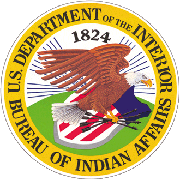Single Publication
Could not determine your location.
South Fork and Salt Fires Burned Area Emergency Response
Unit Information
Agency Name: Bureau of Indian Affairs

Agency Name: Bureau of Indian Affairs

Incident Contacts
- Elaina LaPaz, Mescalero Apache Tribe PIO
- Amanda Fry, Lincoln National Forest PAOEmail:
South Fork Post-Fire USGS Debris Flow Hazards Map Released 07-01-2024
South Fork and Salt Fires Burned Area Emergency Response
Publication Type: Announcement - 07/01/2024 - 12:44
BURNED AREA EMERGENCY RESPONSE
SOUTH FORK POST-FIRE USGS
DEBRIS FLOW HAZARDS MAP RELEASED
JULY 1, 2024
The Interagency BAER Assessment Team for the South Fork and Salt Fires coordinated early with US Geological Survey (USGS) staff during its evaluation of the burned areas to strategically assess potential post-fire impacts to the watersheds and debris flow predicted response during damaging storm events.
“Wildfire can significantly alter the hydrologic response of a watershed to the extent that even modest rainstorms can produce dangerous flash floods and debris flows. The USGS conducts post-fire debris-flow hazard assessments for select fires in the Western U.S. We use geospatial data related to basin morphometry, burn severity, soil properties, and rainfall characteristics to estimate the probability and volume of debris flows that may occur in response to a design storm.”
USGS used the BAER team’s soil burn severity (SBS) analysis of the post-fire burned area for the South Fork wildfire to produce debris flow hazard maps. An interactive map on the USGS website (when posted) will show the potential and size of debris flows that may occur from about a 1/4 inch of rainfall over a 15-minute period, and results from more intense rain events, ranging from about 1/2 inch per hour to 2 inches per hour. This information will also be available online for and size of debris flows that may occur from a range of rain events. When the interactive map is available in about a week from now, you can access it at Emergency Assessment of Post-Fire Debris-Flow Hazards (usgs.gov).
From USGS Fact Sheet 176-97, entitled Debris Flow Hazards in the United States contains information used to interpret the debris flow map and analysis that was incorporated into the BAER assessment team’s anticipated soil erosion and hydrologic response findings. According to the USGS, “Analysis of data collected from studies of debris flows following wildfires can answer many of the questions fundamental to post-fire hazard assessments— what and why, where, when, how big, and how often?” This information is extremely important to assist the public with increasing their safety awareness of the areas where there may be a higher increase in flooding, sediment and soil erosion, and a high probability of debris flows –- all of which are potential risks to human life, safety, and property.
The South Fork soil burn severity (SBS) and USGS debris flow hazards maps can be downloaded at the South Fork and Salt BAER InciWeb site: Nmmea South Fork And Salt Fires Burned Area Emergency Response Information | InciWeb (wildfire.gov) as a JPEG or PDF version under the “Maps” tab.
BAER SAFETY MESSAGE: Everyone near and downstream from the burned areas should remain alert and stay updated on weather conditions that may result in heavy rains and increased water runoff. Flash flooding may occur quickly during heavy rain events--be prepared to act. Current weather and emergency notifications can be found at the National Weather Service website: www.weather.gov/abq/.

 InciWeb
InciWeb